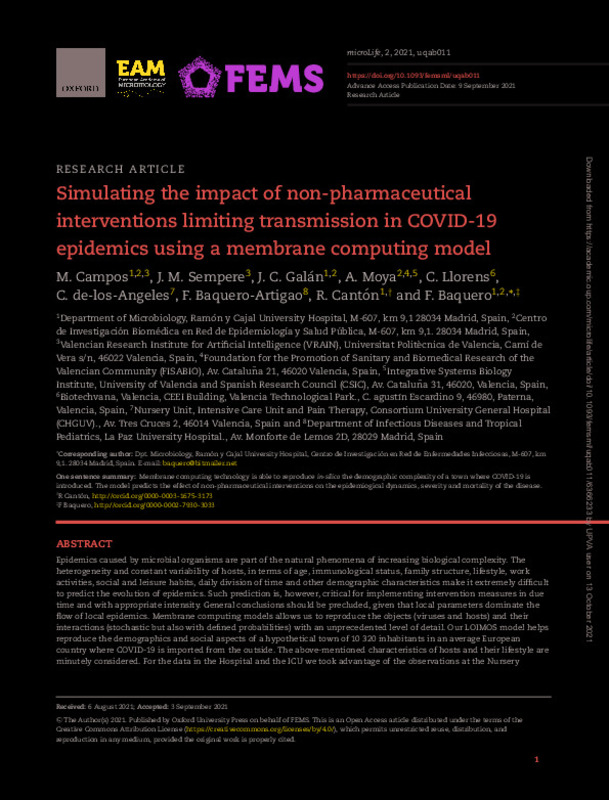JavaScript is disabled for your browser. Some features of this site may not work without it.
Buscar en RiuNet
Listar
Mi cuenta
Estadísticas
Ayuda RiuNet
Admin. UPV
Simulating the impact of non-pharmaceutical interventions limiting transmission in COVID-19 epidemics using a membrane computing model
Mostrar el registro completo del ítem
Campos Frances, M.; Sempere Luna, JM.; Galán, JC.; Moya, A.; Llorens, C.; De-Los-Angeles, C.; Baquero-Artigao, F.... (2021). Simulating the impact of non-pharmaceutical interventions limiting transmission in COVID-19 epidemics using a membrane computing model. microLife. 2:1-14. https://doi.org/10.1093/femsml/uqab011
Por favor, use este identificador para citar o enlazar este ítem: http://hdl.handle.net/10251/188310
Ficheros en el ítem
Metadatos del ítem
| Título: | Simulating the impact of non-pharmaceutical interventions limiting transmission in COVID-19 epidemics using a membrane computing model | |
| Autor: | Galán, J. C. Moya, A. Llorens, C. de-los-Angeles, C. Baquero-Artigao, F. Cantón, R. Baquero, F. | |
| Entidad UPV: |
|
|
| Fecha difusión: |
|
|
| Resumen: |
[EN] Epidemics caused by microbial organisms are part of the natural phenomena of increasing biological complexity. The heterogeneity and constant variability of hosts, in terms of age, immunological status, family structure, ...[+]
|
|
| Palabras clave: |
|
|
| Derechos de uso: | Reconocimiento (by) | |
| Fuente: |
|
|
| DOI: |
|
|
| Editorial: |
|
|
| Versión del editor: | https://doi.org/10.1093/femsml/uqab011 | |
| Código del Proyecto: |
|
|
| Agradecimientos: |
MC and FB were sponsored by the Projects COV20 00067 of the
Program SARS-COV-2 and COVID-19 infection of the Instituto de
Salud Carlos III, Ministerio de Ciencia e Innovacion of Spain, CB06/02/0053 of the Centro de ...[+]
|
|
| Tipo: |
|









